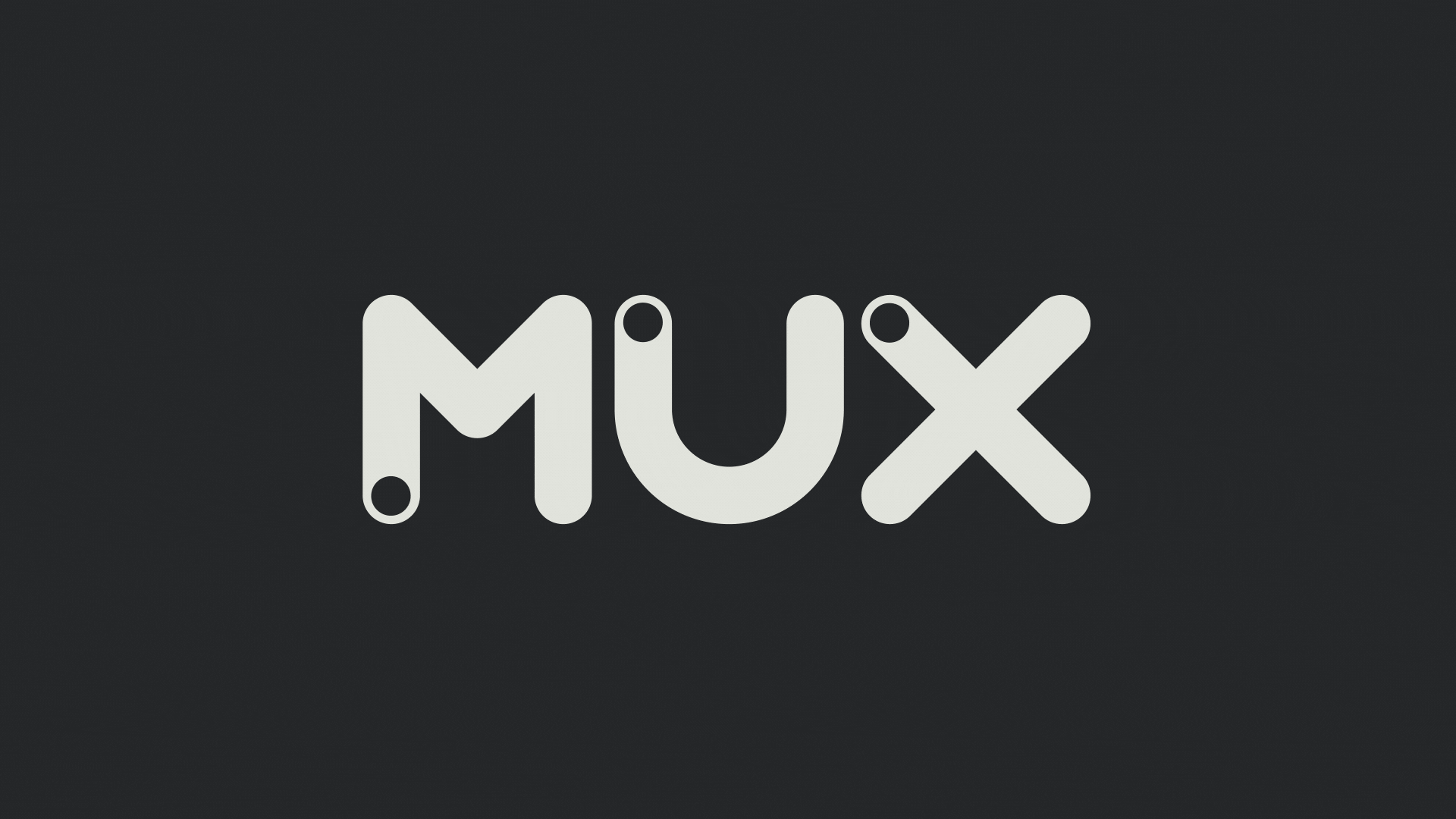Mux
Mux is code for video.
Whether we’re attending meetings or music festivals, video has become integrated into our everyday lives — particularly in a post-pandemic world. But building online video experiences is far from simple. For developers, the process is time-consuming, costly and incredibly complex.
Mux created a product to change this. Founded by developers with a background in video start-ups, Mux provides a sophisticated platform for building video experiences. With just a few powerful lines of code, developers can build easily, efficiently and intuitively on top of Mux’s existing infrastructure, as well as monitor the performance of their videos through detailed metrics. The platform has been used by the likes of Vimeo, TED, Paramount and the Super Bowl. Now, with their status as tech unicorn firmly established, Mux reached out to For The People to bring their brand up to speed.
Built to Play.
To become the tech unicorn they are today, Mux needed to focus their attention on creating and promoting their sophisticated product. But like so many in technology categories, Mux had fallen into the trap of confusing their brand with generic product attributes like ‘simplification’ and ‘ease.’ This approach had reinforced the beliefs of ‘DIY developers’, who saw platforms like Mux to be either too restrictive or entirely redundant.
After engaging with the developer community, it was clear that the sector had been sending the wrong message. Developers aren’t simply pragmatic builders — they’re inherently creative people, who view code as a source of possibility and find joy in the complexity of their craft. Seen this way, the value of Mux is less about simplicity or ease, and more about equipping developers with the tools to create something truly distinct. Where others fixate on products, Mux had an opportunity to celebrate the outcomes of harnessing a platform that’s Built to Play.
The building blocks.
Behind the scenes of every video, there’s a world of intricate engineering and complex code. But for most of us, this world is invisible. The design system reveals the inner workings of video, starting with its smallest processing unit — the macroblock. This 16x16 grid is robust, reliable and infinitely scalable. But most importantly, it’s a tool that’s built for play. With icons, illustrations and a palette that ranges from neutrals to neons, the system combines strong infrastructure with playful elements throughout. It breaks down the walls between code and creativity, showing them instead as two complementary forces at play.
Programming. Only this time, it’s personal.
Across the category, the promise to be ‘for developers’ often translated into jargon-heavy tech speak. Mux had an opportunity to redefine this one-dimensional view of their audience and show that a technical product doesn’t mean an impersonal approach. Their brand voice balances the sophistication of their technology, with the spirit of playfulness inherent to both Mux and their audience. It demonstrates the tangible value of their intangible product, by sharing the moments that occur after we press play. From football matches to first dances — Mux brings the functionality of code and the emotion of storytelling together.
Don’t fux with the code.
Developers are naturally attuned to detail. For code to run properly, there can’t be a single symbol out of place. With a highly functional product, Mux’s new identity needed to accurately represent their technology and above all, be practical to use. From code formatting, to a crowd-sourced typeface — Mux is made for their developer community. But a functional product should still be fun. In place of static blocks of script, the identity brings moments of joy and interactivity to diagrams, dashboards and docs.
Respect the craft, elevate the product, and uphold the promise of play. This was the code we lived by.
Make play possible.
While Mux mainly exists on a screen, their playful internal culture was stronger than ever. We wanted to capture this spirit and let it spill out into the world. By blending the digital and analog space together, the identity brings their intangible product to life. Whether its conference materials, merchandise, or a company guide to longboard jousting — Mux makes play possible, both on our screens and out in the world.
“Rebranding in 2022, Mux found itself with the unique challenge of showing up as fun and relatable to developers, and equally strong and reliable for our larger customers. This balance is so tricky to establish and maintain, but FTP hit the nail right on the head, and we couldn’t be happier with the work they’ve done.”
Linda Eliasen – VP Brand Design, Mux
Credits
For The People
ECD – Jo Roca
Design Director – Patrick Carroll
Designer – Emma Turney, Dash O’Brien-Georgeson,
Joseph Dennis
Motion Designer – Mac Archibald, Emma Turney,
Atsaya Gabiryalpillai
Illustrator – Dash O’Brien-Georgeson
Head of Strategy – Damian Borchok
Senior Strategist – Claudia Henderson
Head of Storytelling – Mat Groom
Storyteller – Arielle Bodenstein
Account Director – Monique Tadrous
CEO – Sonia Uznadze
Mux
Linda Eliasen, Rob Mach, Darius Cepulis, Staci DeGagne, Jason Petz, Joe Montefusco, Mo Gorelik, Rachel Goldberg, Matthew McClure, Steve Heffernan
Typefaces
Rotonto– Marcello Raffo in collaboration with Supernulla
Aeonik – CoType Foundry
JetBrains Mono – Philipp Nurullin













